
Atlanta is slowly coming back to life. I’ve lived here since 1965, and I’ve seen my share of Atlanta in freezing weather. And, I’ve had a child-like innocent attitude toward this sort of event, discussed here. This time, however, things are different, and the reasons why are interesting.
*****
Whenever Atlanta freezes up like it did at the end of January, 2014, I always look back and remember that those days were extraordinary and unique. It all comes down to where I was and who I was with.
History
- The first storm that I remember was in 1973. I had been visiting my parents in Athens and suddenly realized that I needed to get back home before the storm. I crept into town that Sunday afternoon, headed toward my apartment in Buckhead. There was a 1/2″ patina of ice on my car. During the night, the electricity went off as thousands of ice covered limbs fell onto power lines. I was relatively fortunate, since the power came back on a day later, but many parts of town were dark for a week, if not longer. After that event, Georgia Power became more aggressive in maintaining power line rights of way.
- In 1982, I was sitting in a bar on Irby Street in Buckhead drinking beer with a friend. We looked out to see snow falling heavily; he headed home and I found myself making a choice as to where I would go. I could go home to my little cottage in Brookhaven or I could go be with the woman that I loved. By the time things had firmed up and I was granted permission to stay with her, the roads had become barely passable. I ended up walking to Sandy Springs in the snow. Nearby, I-285 was completely shut down, with cars parked all over the place. I’m glad that I was with her, even though we had to walk to the local 7/11 to buy groceries as things dragged on. I would eventually marry that lovely young woman.
- By 1993, we were married and living in Brookhaven when another storm hit town. We were without electricity for five days. Fortunately, my wife treated it as a camping adventure, and we cozied up near the fireplace under blankets. The family cats hung nearby, too. The big discovery in that storm was that we still had hot water; I had assumed that because there was no electricity, there was no ignitor for the water heater. Fortunately, the heater had a pilot light and we were able to warm up in the bathtub.
There have been other storms, and there have been some false alarms, too. I remember there was the threat of bad weather in the early 1980’s; everybody left town and went home to prepare for the oncoming storm. It never happened and there was some finger-pointing about it after the fact. Employers and schools were embarrassed.
Through it all, there has been a sense of “Well, this stuff happens from time to time.” and that’s been it. This time appears to be different.
Politics
Certainly, politics has something to do with it. Governor Nathan Deal is running for reelection. Like him or hate him, the first Deal administration has been remarkably quiet. There have been a few dust ups along the way, but the Deal administration has generally cruised right along. Of course, with an impending election, opponents are eager to drum up whatever campaign rhetoric is available.
One of our neighbors, an all-politics all-the-time sort, had this to say:
I was just told by a friend that her son saw our Governor, Nathan Deal at the Varsity at lunchtime yesterday right as the snow was starting. He even took a picture of him. I guess a chili cheese slaw dog and a frosted orange took precedence over Georgian’s lives.
We can only speculate as to what she would have had to say if she had gone into the Varsity’s men’s room. And, now that things are over, opponents are looking for anything that will stick. I don’t remember previous governors getting this kind of flak; usually the Atlanta mayors get hit with it.
What is different this time is that popular expectations have changed. We’ve been going through a five-year cycle of significantly increased governmental presence in our lives. We are being told that government will be there to solve our every problem, and that only government has the tools to make such changes. It was inevitable that popular expectations would rise as the government’s presence in our lives also rose. Now you hear people asking “Why wasn’t the National Guard called out sooner?” This on the second day of the storm.
Social Media
In spite of the constant drumbeats of anger over the traffic situation, there were some distinct bright spots. Facebook proved to be an extremely useful tool, especially when someone set up a page that helped people find shelter:
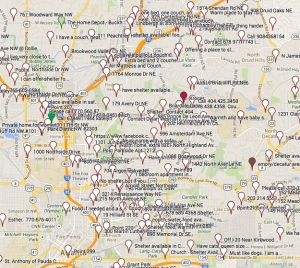 All those little white markers indicate someone who is willing to give shelter to strangers in this emergency. Likewise, others reached out to strangers stuck on the highways:
All those little white markers indicate someone who is willing to give shelter to strangers in this emergency. Likewise, others reached out to strangers stuck on the highways:
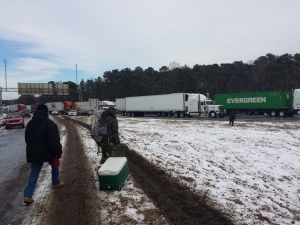 More about those kind souls, here. Home Depot and local grocery stores let people sleep inside where it was warm. Not exactly the best, but at least acceptable. Chick-fil-a reportedly gave out food to those stuck in place. This sort of stuff is Atlanta at its best. And, there was dry humor:
More about those kind souls, here. Home Depot and local grocery stores let people sleep inside where it was warm. Not exactly the best, but at least acceptable. Chick-fil-a reportedly gave out food to those stuck in place. This sort of stuff is Atlanta at its best. And, there was dry humor:

Stay off Johnson Ferry. Seriously.
Social media has not only been the font of information for people affected by the storm, it has also been the source of discussion. Some it has been very good:
Lisa Engle I think no matter the call made, right / wrong, pockets of people will find “fault” and reason to highlight how it “should” be done different. After 25(ish?) in “the system”, I’ve seen that there is always controversy about the choices made. Julie – The call made a few weeks ago was bc of the buses not having the fuel “supplement” for the diesel to deal w/ the cold.. (from what I’ve been told)…wasn’t a “kids in the cold” issue…more a “can’t have kids stranded bc our buses won’t run” issue. Personally, I think the call to cancel would’ve been best in hindsight, but sure as that happened the snow would’ve arrived at 6:PM instead and the system would be made to look like idiots who caused parents trouble w/ childcare. Moving on…
There already has been major discussion online and in the newspapers. This includes an article titled “Why the South Fell Apart”. There is sure to be a lot more, including this blog item. Yet, there is one other matter that has not been discussed…….
The Trucks
As I opined on Facebook:
At the mere mention of ice and snow, when everybody is racing to the store to buy bread and milk, that is the time to officially embargo all tractor trucks from passing through Atlanta. The city trucks are given enough time to get home, and then they too stay put until the storm has passed. Almost every scene in the year’s debacle includes shots of tractor/trailer rigs folded up, blocking lanes of traffic.
The presence of tractor trailer trucks significantly made matters worse. A couple samples:
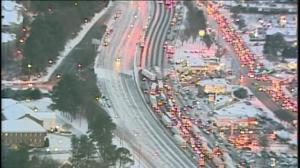
 Atlanta is a major transportation crossroads, and the tractor trailer traffic is significant in this town. If you don’t believe me, go over to I-75 near Cumberland and count the number of trucks passing by in the span of five minutes. Certainly, these trucks should be kept off the highways and away from Atlanta until the weather clears. The truckers are sure to blame the auto drivers, and they’re probably right. But it doesn’t sound so good to hear them complaining about the cars when nobody’s moving.
Atlanta is a major transportation crossroads, and the tractor trailer traffic is significant in this town. If you don’t believe me, go over to I-75 near Cumberland and count the number of trucks passing by in the span of five minutes. Certainly, these trucks should be kept off the highways and away from Atlanta until the weather clears. The truckers are sure to blame the auto drivers, and they’re probably right. But it doesn’t sound so good to hear them complaining about the cars when nobody’s moving.
Long term, the truck situation in Atlanta needs resolution, regardless of the weather. Looking to Europe, there are certain highways that are so congested that the tractor trailer trucks are hauled past the congested areas by train:
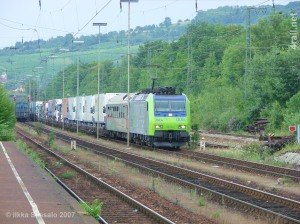 It’s called a “Rolling Highway“. And it’s worth a look.
It’s called a “Rolling Highway“. And it’s worth a look.
The Trains
Those who read these pages regularly know that I am a train enthusiast. No apologies from me on that score, for I know that steel wheel on steel rail has some inherent advantages, both with fuel economy and system reliability. For while MARTA buses were not able to run, the heavy rail portion of the system operated reliably, even with a fire at Five Points station. My nearby Norfolk Southern line to Washington kept operating in its same reliable fashion through the storm. It’s hard to improve on that.
Aftermath
There is sure to be a lot of discussion about this, but one thing keeps coming back to me. Atlanta gets one of these storms every other year, with pretty much the same outcome every time. Fox News is saying that we only have perhaps a hundred sand / plow trucks, while Chicago has four times that many, if not more. Is it necessary for us to have hundreds of sand trucks for an event that happens every other year?
Be as the reed in the wind; bend but do not break.
I’m sorry for those who got stranded, and I know that we can do better, but this all needs a grain pf practical judgement. This is not Duluth, Minnesota. And, we’re lucky that it is only snow on the ground, no ice in the trees. Which means that the electricity is still on, so we still have heat and can watch Fox tell us how bad things are.
And, when the next storm threatens and the DoT starts spreading salt and sand on the roads, who will be the first person to complain about its affects upon the environment?
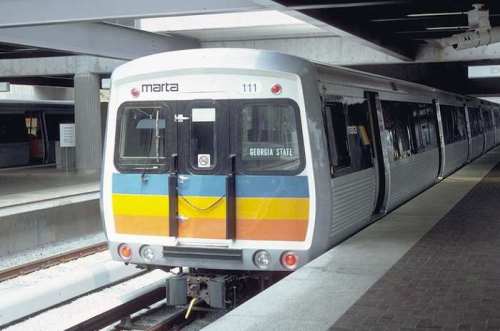 Much is being made of a rail line connection to Emory; presumably this will be a light-rail line from Lindbergh Station which will follow the CSX tracks to the Emory campus. I even suggested as much a while back, but the prevailing thought at that time was that a heavy rail line should be built along that same route. The old metric for a heavy rail line was $400 million per mile unless there was extraordinary construction such as hard rock tunneling. I’m sure that it is more expensive now.
Much is being made of a rail line connection to Emory; presumably this will be a light-rail line from Lindbergh Station which will follow the CSX tracks to the Emory campus. I even suggested as much a while back, but the prevailing thought at that time was that a heavy rail line should be built along that same route. The old metric for a heavy rail line was $400 million per mile unless there was extraordinary construction such as hard rock tunneling. I’m sure that it is more expensive now.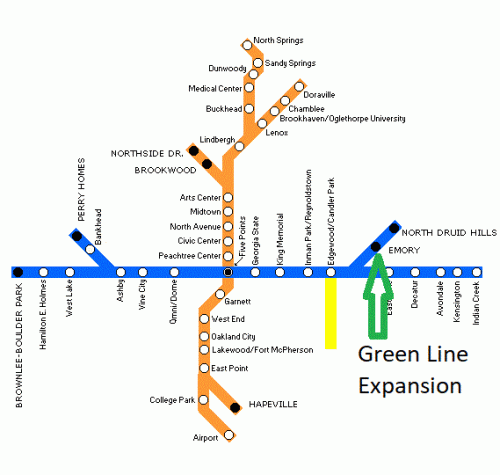
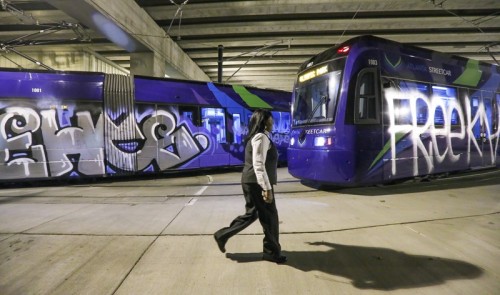

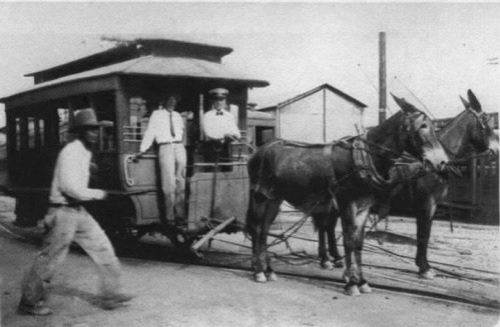
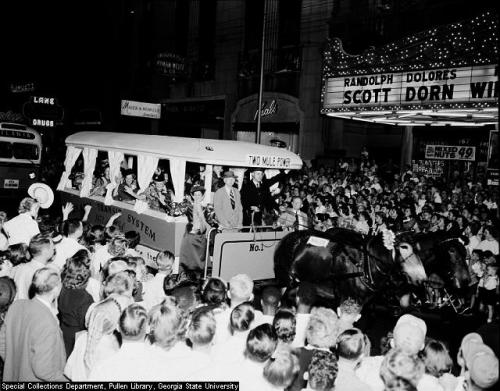
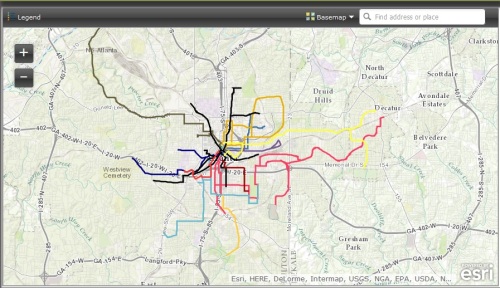
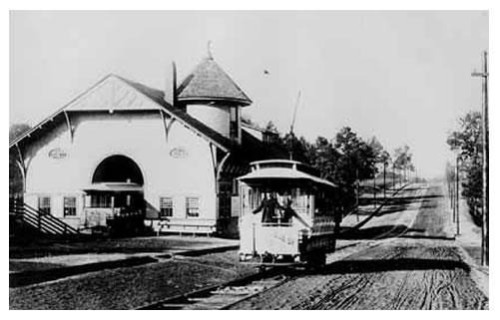
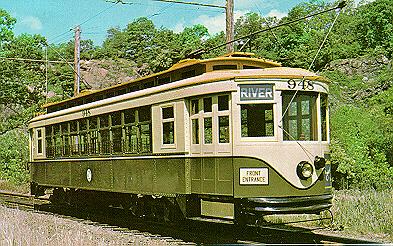
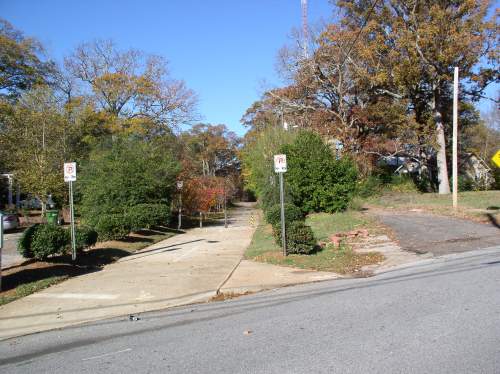
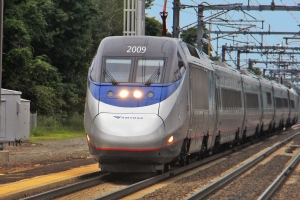



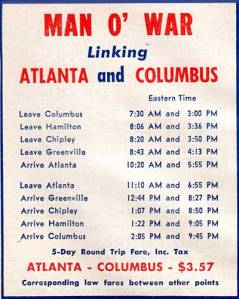
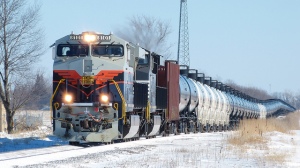









You must be logged in to post a comment.